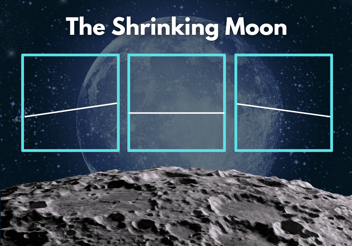A plant to make Mars a little less extreme? - Kesler Science Weekly Phenomenon and Graph
With all the exciting breakthroughs happening in space science, who hasn't been dying for people to finally set foot on Mars? I know I have - but when I take a close look at what conditions on the 5th planet from the Sun are actually like, sending humans is a lot easier said than done.
The first thing we'd have to deal with is the weather. The temperatures on the red planet range from -73oC to 20oC, which is intolerably cold. If you sat at the Martian equator on the hottest summer day, the warmest you would ever get is room temperature on Earth. There is also hardly any usable water on Mars. Sure, there is some ice deposition that happens in the wintertime at the poles, but the lack of H2O means an extremely low humidity.
Another problem is radiation. These are high energy particles speeding through space from other stars and galaxies. The radiation count ramps up during solar flares. Here on Earth, our magnetosphere protects from any serious exposure - but Mars doesn't have that. This means anything alive on Mars needs to protect itself from radiation if it wants to stay alive for long. Plans have been made for building underground, reinforced structures for humans to avoid these cancer-causing particles.
A major issue is the (lack of) magnetic field on Mars. Because the core doesn't spin fast enough to create a magnetosphere, the solar winds continually slam into the planet, stripping it of any atmosphere. The atmosphere around Earth, made up of mostly of nitrogen and oxygen, exerts a pressure of 101 kPa at sea level. The gases around Mars, which contain mostly carbon dioxide, has a pressure of 610 Pa. This is bad news! Liquid water cannot exist at such low pressures, and the blood inside of our bodies would literally boil if we did not have protective suits.
Looks pretty bleak, right? Scientists haven't given up, though. In one interesting experiment, scientists started testing one of the world's toughest plants, called the Tortula moss, and they found some encouraging results. The Tortula moss, also known as Syntrichia caninervis, is an absolute extremophile. It is a desert plant that is so tolerant of intense growing conditions, it is one of the few plant species that can survive life on Antarctica.
Just how hardy is the Tortula moss? In laboratory tests, the moss was able to survive temperature ranges of -40oC to 65oC. It can handle relative humidity of 1.4%, drier than any desert on planet Earth, and can live through getting blasted by gamma rays. Interestingly enough, the moss turned black after the intense trial by fire. With just a few drops of water, Syntrichia caninervis bounced back to a lush, green moss again.
Let's say we brought Tortula moss to settle on Mars - and it survived. What could be the larger impacts? Plants are critical for livable conditions here at home. The moss could absorb excess carbon in the Martian air, create oxygen, increase soil fertility, and even allow the dirt on Mars to retain water better. Could Mars one day be converted to a second Earth, with a robust atmosphere and natural water bodies?
Sorry to get your hopes up, but... probably not! 😆 The other issue is gravity. With Mars having less than 40% of Earth's gravity, coupled with the solar wind, the majority of any atmosphere or water we created would just disappear into space. If we hope to have a comfortable atmosphere on Mars, we'll need some major leaps forward in technology.
Since the Martian atmosphere is one of the biggest hurdles to colonization, I got curious about the atmospheric pressures on other celestial bodies. We only know the values of the planets with thinner atmospheres - some planets have such deep atmospheres, we can't even see the surface to measure the surface values. Even of the ones we can see, it's wild how much variety there is!
.png?width=500&height=375&name=Spookier%20Extinction%20Graph(1).png)
If I wanted to bring this graph to my students, I'd prompt them with questions like:
💡Which planet on the graph has the greatest atmospheric pressure?
💡How does the atmospheric pressure of the Moon compare to Mars and Mercury?
💡Think about the size and positions of the planets in the solar system. Why might Mercury have so little atmosphere?
The idea of visiting Mars is still tantalizing. Maybe your students can research - or imagine - some of the creative technologies that could help make it a reality!



